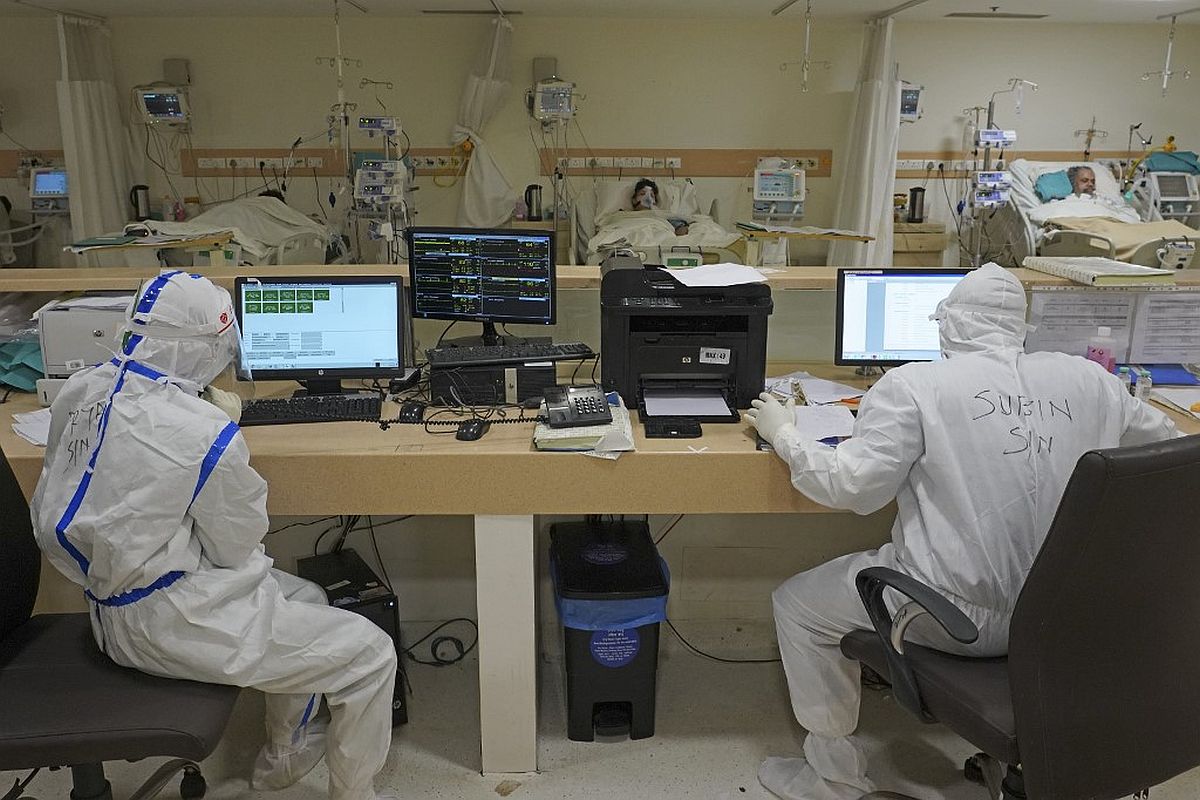The worldwide Covid-19 pandemic raging since the beginning of last year has demanded an urgent relook at the overstrained health infrastructure in developing countries including our own. The moot point is of course the advisability of bringing in structural reforms in the health delivery system within a manageable time span without causing too much disturbance to the existing set-up and putting too much pressure on the already stressed government resources.
The past year has starkly exposed the inadequacies of our government health infrastructure starting from the Primary Health
Centres (PHCs) to the large hospitals in the States and the national capital, as well as shortcomings of smart private hospitals some of which used the opportunity to fleece unfortunate patients while others played safe and refused to admit Covid patients.
It is true that this virulently infectious disease had impacted countries across the world as rarely seen in recorded medical history. But most of the developed countries have so far generally managed to avoid the chaos, confusion and heart-rendering tragedies that many from poor financial backgrounds had faced in getting patients admitted and treated under professional medical care in our country.
Advertisement
In fact the weaknesses in our health delivery system were already evident when dengue, malaria and similar seasonal viral diseases occasionally overwhelmed the system. But those distress signals were largely ignored by our health planners and politicians. Our legacy of colonial healthcare largely depended on two basic premises ~ (a) chain of well managed urban centric medical institutions and (b) professionally trained and dedicated individual medical practitioners along with traditional health workers dispensing services in both urban and rural areas often against stupendous odds.
Although this somehow worked in a foreign-occupied, poor and fatalistic society, the system miserably failed to deal with epidemics like malaria, cholera, plague or even common water-borne diseases with millions dying every few years.
Awareness or practice of safe and scientific precautionary measures and general level of sanitation were also extremely poor.
After independence, though new infrastructure was set up at lower levels the apex level gradually became weak and static. With exponential demographic growth since Independence compounded by stagnant number of medical colleges the population-doctor ratio in the country became pathetic. Quality of medical education also suffered as many bright students opted for technical degrees as increasing construction activities opened up new avenues and State and national level technical colleges were established without matching developments in the field of medical education.
Thus though new health infrastructure including Block level PHCs and below were created they suffered from acute shortage of qualified health workers. Even the district hospitals set up by the
British and doing generally competent work became poorly manned and unable to cope with increased patient load and tended to refer patients to higher levels at the slightest pretext.
With passage of time the second pillar of dedicated team of private medical practitioners dispensing healthcare in rural areas also declined both in number and quality with many of them preferring to set up small private establishments often with an eye to profit and compromised on quality.
In this situation acute lack of beds in the Government-run medical institutions became the order of the day while most private hospitals often used this shortage of beds in public hospitals to fleece patients. Thus the common man had to face the double jeopardy of refusal at
Government hospitals and financial ruin in private ones. The recent pandemic has cruelly exposed this sorry state of health infrastructure and reinforced the need for a through revamp.
Our health planners must aim at providing for all citizens of India easy access to world class healthcare facilities as near their location as possible without any discrimination including on grounds of financial incapacity.
A vigilant monitoring system ensuring strict maintenance of standards of treatment and patient care is just as vital. In other words we need to empower all citizens to walk into any registered healthcare facility, prove his identity through online identification and avail suitable treatment for ailments notwithstanding financial disability. The exercise should be coordinated and monitored by an independent statutory authority.
To ensure this we have to address the serious problems of geographic inaccessibility to standard healthcare facilities particularly in rural areas, reduce the pressure on overstretched Government facilities and address complaints about delay, standard of treatment and inflated bills in private healthcare facilities.
Therefore the crying need is for fully-equipped, multidisciplinary hospitals catering to every 2-3 lakh population.
But it must be admitted it is realistically not possible for either the
Central or most
State Governments to develop and maintain such facilities in the foreseeable future due to demands on resources from other important sectors.
We must therefore seek private and corporate investments to set up such facilities with government guarantee to meet the costs of treatment including medicines and other allied expenditure preferably on a graded basis. To achieve this within a reasonable time Central/State Governments may invite private/corporate investors to set up modern hospitals at designated locations.
The site selection and transfer at market rates should be arranged by respective State Governments.
The existing PHCs / BPHCs may also serve as initial locations.
The facilities must conform to detailed specifications laid down by an independent authority for infrastructure, provision for indoor and outdoor treatment and number and quality of health workers deployed. There has to be regular inspection and online surveillance by the independent authority to ensure full compliance. Similarly there must be a transparent and standardized list of hospital expenses for each item of service rendered including bed charges, pathological, radiological or image-based tests, surgical interventions, replacement of limbs, delivery charges, supply of critical care items like oxygen, ventilation etc.
Such charges must be regulated periodically by the designated authority after a process of consultation with all stake holders as well as recognized medical and financial experts.
Hospitals may also be graded periodically on a scale above the minimum. The choice of hospitals will of course depend on the individual and family. Thus the top graded hospitals with reputation for dedicated and competent patient care will thrive and those with lesser credibility will suffer. The registered hospitals must compulsorily provide adequate living accommodation for all categories of health workers. Cost of treatment against bills raised by the treating hospital and duly checked and approved online by the independent authority ought to be shared between the patient and the Central
Government represented by the independent authority on a graded scale according to financial position of the patient and his family.It is suggested that at the base level covering all those below the poverty line the sharing may be on a 10 (patient): 90 (independent authority) ratio.
The cost should be shared in a 50:50 ratio in the highest income bracket with two more categories in between. In all cases total family income should be the sole criterion and not individual one as each member will become a beneficiary.
It may be comparatively easier to determine such family income in case of around 6 crore
Indians who pay income tax. But such determination in respect of the rest of the population is expected to be a gigantic, difficult and complex work with most of the families trying to conceal real family income.
There are, however, some existing data bases which may serve as the starting platform.
For example around 14 crore registered
MGNREGA beneficiaries may serve to identify population at the base level. Similarly about 4.5 crore EPF and 9 crore ESI members also constitute important data sources. About 45 crore
PAN card holders also are potential data sources. Thus the task may not be as daunting as would initially suggest. The existing data from different sources is to be collated and linked to around 122 crore Aadhaar card holders for verification and computation. (To be Concluded)
The writer is a retired Principal Secretary, Govt. of West Bengal and can be reached at ssci@rediffmail.com











